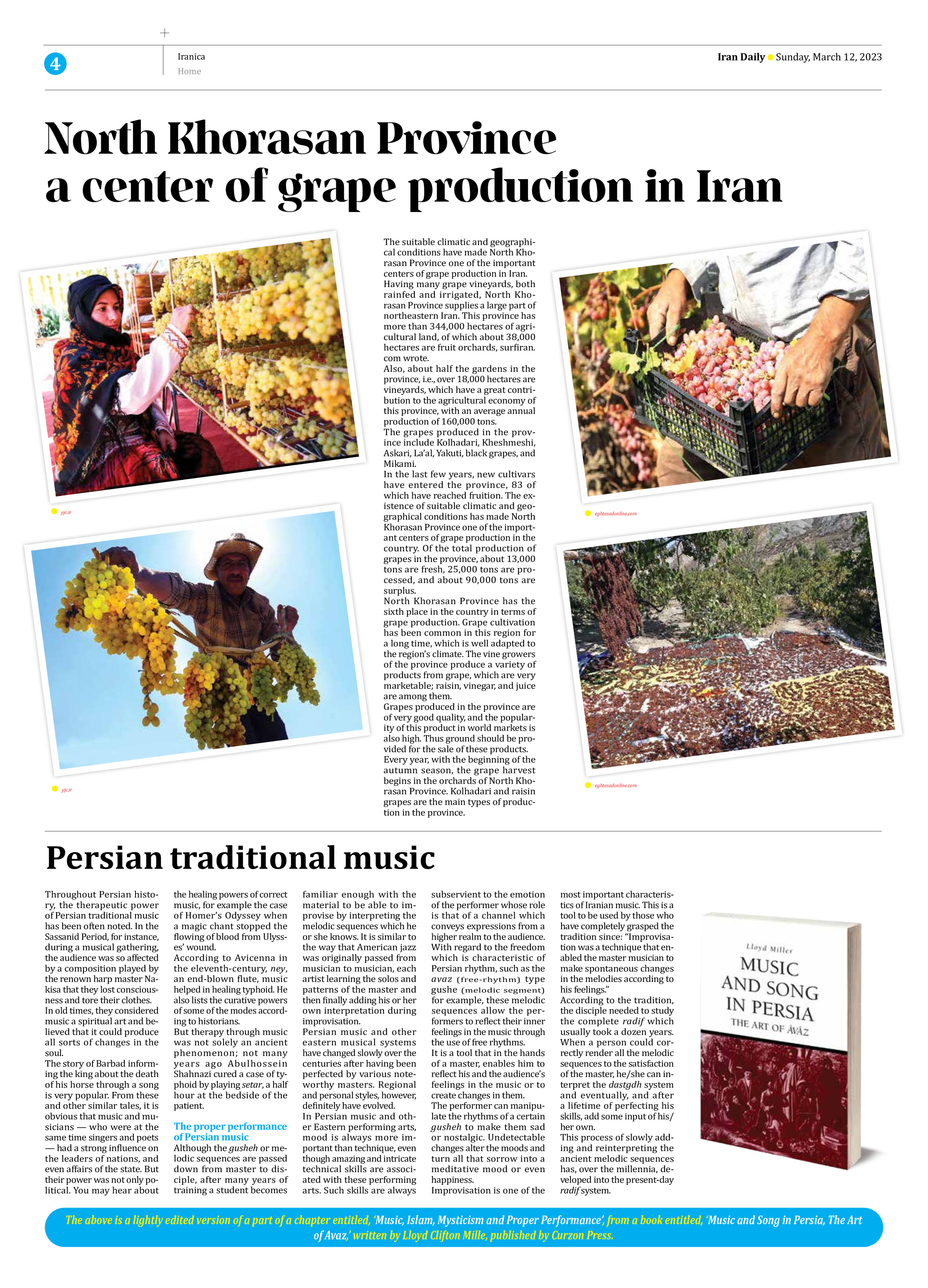
Persian traditional music
Throughout Persian history, the therapeutic power of Persian traditional music has been often noted. In the Sassanid Period, for instance, during a musical gathering, the audience was so affected by a composition played by the renown harp master Nakisa that they lost consciousness and tore their clothes.
In old times, they considered music a spiritual art and believed that it could produce all sorts of changes in the soul.
The story of Barbad informing the king about the death of his horse through a song is very popular. From these and other similar tales, it is obvious that music and musicians — who were at the same time singers and poets — had a strong influence on the leaders of nations, and even affairs of the state. But their power was not only political. You may hear about the healing powers of correct music, for example the case of Homer’s Odyssey when a magic chant stopped the flowing of blood from Ulysses’ wound.
According to Avicenna in the eleventh-century, ney, an end-blown flute, music helped in healing typhoid. He also lists the curative powers of some of the modes according to historians.
But therapy through music was not solely an ancient phenomenon; not many years ago Abulhossein Shahnazi cured a case of typhoid by playing setar, a half hour at the bedside of the patient.
The proper performance of Persian music
Although the gusheh or melodic sequences are passed down from master to disciple, after many years of training a student becomes familiar enough with the material to be able to improvise by interpreting the melodic sequences which he or she knows. It is similar to the way that American jazz was originally passed from musician to musician, each artist learning the solos and patterns of the master and then finally adding his or her own interpretation during improvisation.
Persian music and other eastern musical systems have changed slowly over the centuries after having been perfected by various noteworthy masters. Regional and personal styles, however, definitely have evolved.
In Persian music and other Eastern performing arts, mood is always more important than technique, even though amazing and intricate technical skills are associated with these performing arts. Such skills are always subservient to the emotion of the performer whose role is that of a channel which conveys expressions from a higher realm to the audience.
With regard to the freedom which is characteristic of Persian rhythm, such as the avaz (free-rhythm) type gushe (melodic segment) for example, these melodic sequences allow the performers to reflect their inner feelings in the music through the use of free rhythms.
It is a tool that in the hands of a master, enables him to reflect his and the audience’s feelings in the music or to create changes in them.
The performer can manipulate the rhythms of a certain gusheh to make them sad or nostalgic. Undetectable changes alter the moods and turn all that sorrow into a meditative mood or even happiness.
Improvisation is one of the most important characteristics of Iranian music. This is a tool to be used by those who have completely grasped the tradition since: “Improvisation was a technique that enabled the master musician to make spontaneous changes in the melodies according to his feelings.”
According to the tradition, the disciple needed to study the complete radif which usually took a dozen years. When a person could correctly render all the melodic sequences to the satisfaction of the master, he/she can interpret the dastgdh system and eventually, and after a lifetime of perfecting his skills, add some input of his/her own.
This process of slowly adding and reinterpreting the ancient melodic sequences has, over the millennia, developed into the present-day radif system.
The above is a lightly edited version of a part of a chapter entitled, ‘Music, Islam, Mysticism and Proper Performance’, from a book entitled, ‘Music and Song in Persia, The Art of Avaz,’ written by Lloyd Clifton Mille, published by Curzon Press.







